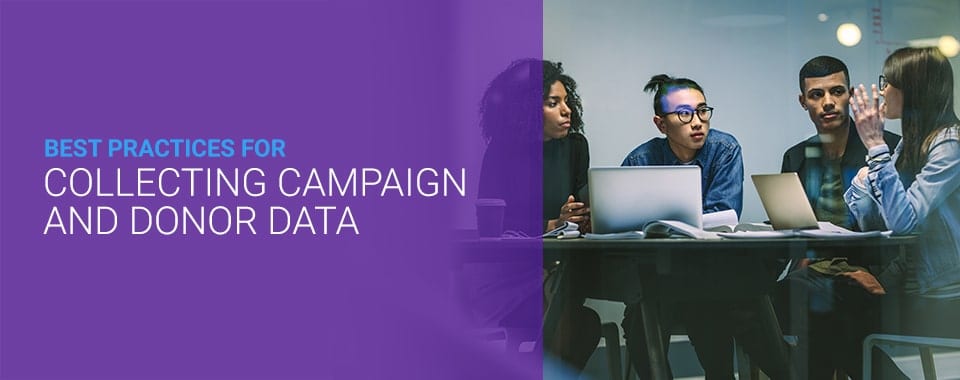Aug 18, 2022
The Ultimate Guide to Donor Retention
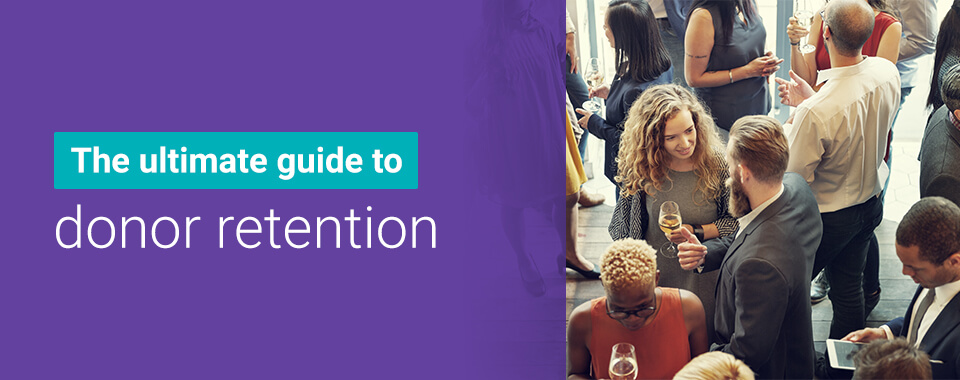
Donors are the lifeblood of your nonprofit. They do so much more than simply provide monetary benefits. They offer their time, connections, and other resources to your organization. While you need new people giving to your nonprofit, don’t forget to establish a method to keep those donors you already have. With a good donor retention strategy, you can enjoy continued support for your organization.
What is Donor Retention?
Donor retention rates indicate how many people stay donors to your organization. A higher retention rate reflects greater success in keeping people with your nonprofit. To retain donors, you Take steps to engage first-time givers and keep them active with your organization.
Getting people to donate time and money to your nonprofit is part of the fundraising process. If you look at the number of donors nonprofits got through 2021 compared to 2020, there was a significant drop of 5.7%. Due to the unusual circumstances of 2020, there was a 0.8% drop in donor numbers since 2019. However, funds raised increased by 11% from 2019 to 2021.

The increasing funds and decreasing number of donors reflect a lack of small donation amounts and new donors. Between 2019 and 2021, donor retention dropped by 7.9%. Donor retention rates average 44% across American nonprofit organizations. Looking at the inverse of this number, organizations average 56% of lost donors. A similar result occurs when looking at donor habits. The United States is a generous country, with 87% of people donating to a nonprofit at least one time in the last eight years. Over that time, 62% of givers didn’t maintain that donation because they changed their donation amount, skipped years of giving, or shifted donations to another organization.
Those who donate the most and are the most active with an organization tend to become retained donors, sometimes called “sticky donors.” These people make repeat donations to an organization, which can dramatically help fundraising efforts. In 2021, high-dollar donors and repeat donors contributed significantly to the 11% increase in the dollar amount raised by nonprofit organizations since 2019. Keeping regular donors could lead to greater fundraising results.
Before raising retention rates, you must evaluate your current efforts to determine how your nonprofit can unlock better fundraising results. Identify the areas your organization excels in and which areas leave room for growth or new tactics. Incorporate feedback and insight from all members of your team, including staff and volunteers.
Why Does it Matter?
Your donor retention rates have several impacts on your organization beyond increasing giver numbers. By increasing your sticky donor numbers, you don’t have to pour as many resources into finding new donors, especially since repeat donors often give more than first-time givers. Your organization may spend up to three times the amount of a first-time giver’s donation just to encourage their first donation. By cutting the work needed for new donor acquisitions, your organization saves money.
Better connections with donors can increase their chances of giving, volunteering, and telling others about your nonprofit. Having a good relationship with retained donors is a two-way street. With more regular donors, you have a greater pool from which to get feedback on your organization and fundraising efforts. Donor feedback strengthens your relationship and mutual benefits, and it provides valuable information for making decisions about future campaigns, marketing efforts, or fundraising events.
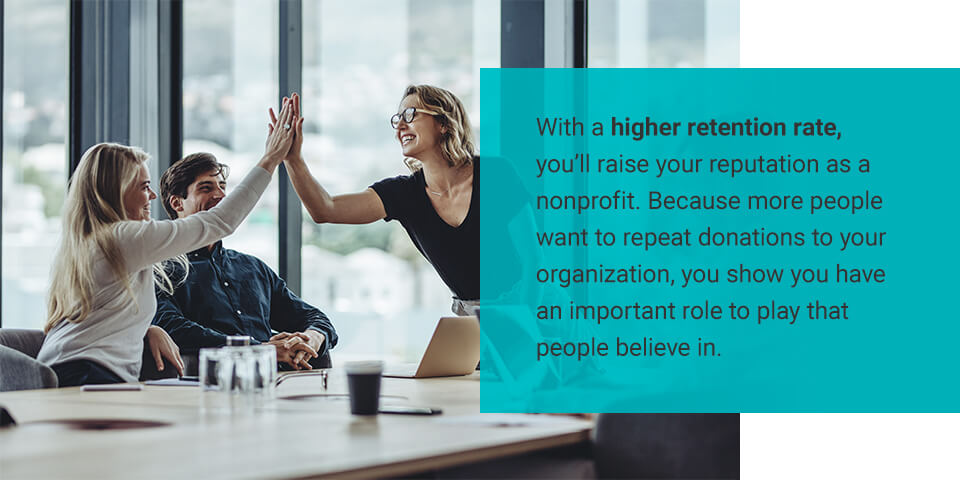
With a higher retention rate, you’ll raise your reputation as a nonprofit. Because more people want to repeat donations to your organization, you show you have an important role to play that people believe in. This type of reputation can naturally increase new donors and the number of retained givers.
Evaluating your Current Retention Rates
Before you do anything else, you need to find your current donor retention rates. Doing so will provide you with the hard data you need to compare your campaigns and donor retention efforts to see whether the methods used work.
To calculate your donor retention rate, you need to know how many people donated to your group each year and how many repeat donors you had. Divide the number of repeat donors from year two by the number of total donors the year before. This gives you the percentage of people who returned to give.
For example, if you had a total of 1,000 donors in 2020 and retained 200 of them for 2021 giving, you would have a retention rate of 200/1000 = 0.2 = 20%.
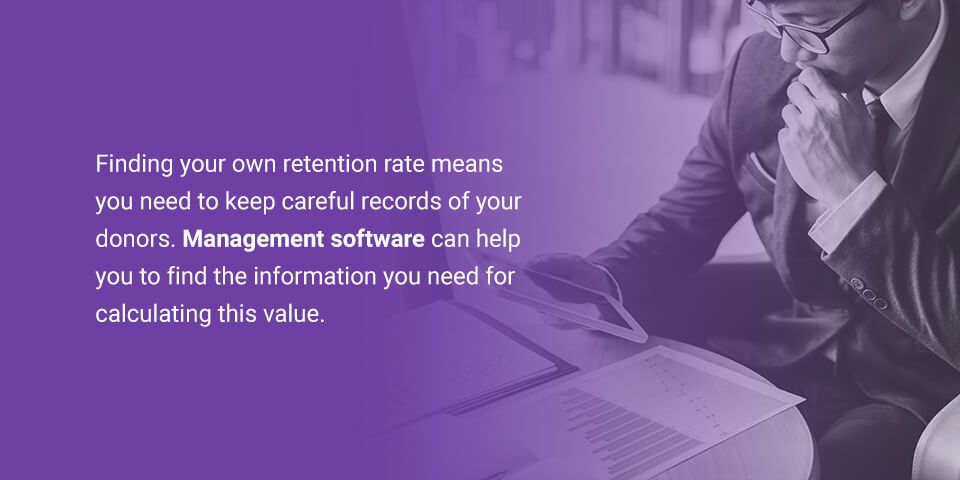
Finding your retention rate means you need to keep careful records of your donors. Management software can help you to find the information you need for calculating this value. Some types of programs will even determine your donor retention rate for you.
Reevaluate your retention rate regularly to reveal whether your donor retention strategies work well to raise the rate and make adjustments as needed.
Strategies to Increase Donor Retention
Awareness of your nonprofit’s successes and failures can help you get and keep donors. Once you recognize ways to improve, examine a variety of options to boost your retention rate. Using only one strategy won’t work for all donors. You need to combine multiple strategies to turn one-time givers into sticky donors. Set key performance indicators (KPIs) to track and measure your organization’s progress and overall retention success.
When focusing on keeping donors, treat them well by offering generous thanks, giving them chances to become more active with your organization, engaging them personally, getting feedback from donors, and keeping all relevant information organized. These actions can help you attain a healthy rate of retained donors when used correctly.
1. Thank them promptly
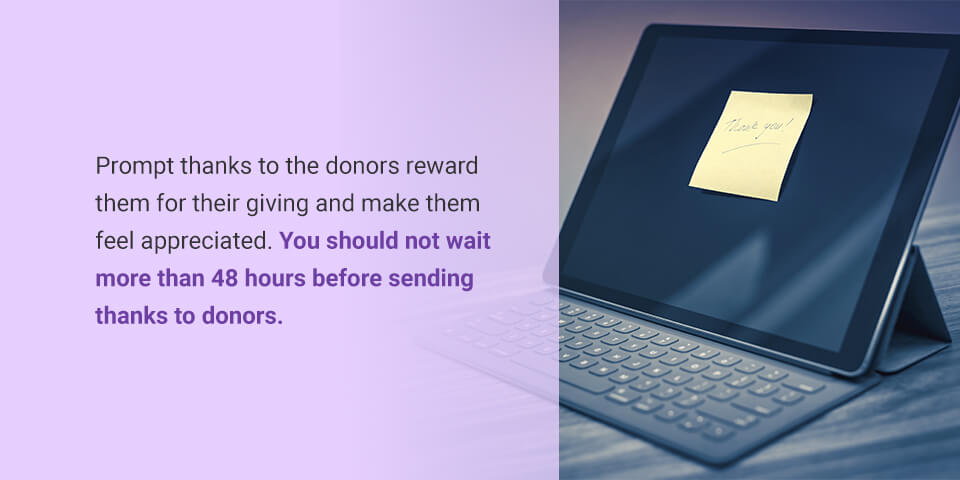
Always make sure to thank your donors as soon as they give to your nonprofit. Prompt thanks to the donors reward them for their giving and make them feel appreciated. You should not wait more than 48 hours before sending thanks to donors. However, immediate thanks may be difficult to offer at in-person fundraising events. You can use online communication to express your gratitude.
When you send a thank you email, use the opportunity to connect with the donor by including your group’s story. After seeing the email, the donor will feel glad they gave to your nonprofit and may be more inspired to do so again. Animated thank you emails can be eye-catching ways to inspire the donor while visually conveying your story.
An immediate email after a donation should not be the only way you thank your donors. Continue to reach out during and after the campaign to thank them in multiple ways. Ideal times to connect include during the first few days of a campaign, in the week after the campaign, and during the months following the campaign. You can also send them regular updates as your cause reaches new milestones.
These additional thank you opportunities let you use multiple channels outside of email to connect with donors. Send handwritten thank-you notes through the mail, phone them to verbally thank them, or deliver a video showcasing your volunteers and thanking donors.
2. Ask for another donation sooner rather than later
Don’t let your donors forget about your nonprofit. Send them a request for another donation soon after their initial one. According to the theory of The Forgetting Curve, people forget information at an exponential rate without refreshing their memories. With regular reminders, it may take donors longer to forget what they learned. For nonprofits, this means you need to remind donors about your group regularly to stay in their minds as your next campaigns start.
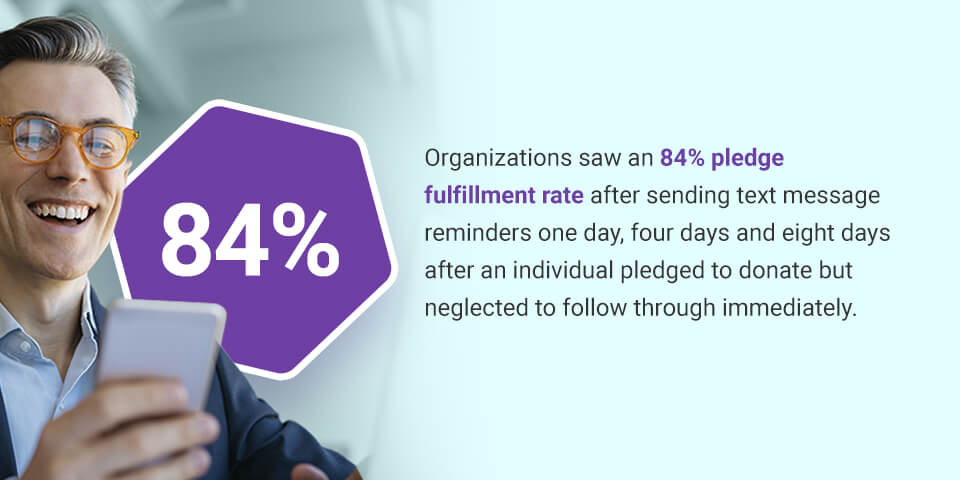
One way to ask for donations is through text messages. Organizations saw an 84% pledge fulfillment rate after sending text message reminders one day, four days, and eight days after an individual pledged to donate but neglected to follow through immediately. Imagine missing out on those donors by failing to connect with them.
After they donate, don’t forget to thank donors and ask for future donations. Keep in contact with your donors to ensure they don’t forget your nonprofit or its cause.
3. Have recurring gift options
Make it easy for your donors to become repeat givers by offering recurring gift options and other ways to give. You want to reduce as many barriers to giving as possible for existing donors. For instance, if you don’t already have mobile giving options, set them up. Or, create a way for donors to manage monthly or other recurring gifts without manually entering their payment information each time.
Even with recurring gift options, always thank the donors and keep them updated on how their giving helps others through your nonprofit. They should feel part of your organization through their donations. Use thank you emails, letters, postcards, videos, and other contact methods to let them know their regular giving is just as appreciated as their first gift was.
4. Implement donor segmentation
Your donors all have different goals, though they all contribute to your organization. Segmenting donors into groups and delivering content based on each group’s needs can create a more customized experience for all your givers.
Options for segmenting donors include age group or giving frequency:
- Age group: For age groups, you may want to communicate to older groups via LinkedIn, Facebook, and Pinterest, which may have larger percentages of Baby Boomers and Gen Xers using them. Generations Y and Z might be more active on Twitter, YouTube, and Instagram. Use nonprofit marketing guides to create communication strategies with new and existing donors over social media.
- Giving frequency: Giving frequency will also impact how you connect with your donors. First-time donors who give more than $250 to an organization have a greater chance of becoming sticky donors. Deliver highly encouraging content to encourage retained givers, but don’t forget the smaller donors, including those from younger demographics. Using social media to encourage them to give smaller amounts through the year can turn them into repeat givers.
By segmenting donors and your communications with them, you have a greater chance of reaching them in ways they will respond to.
5. Add personal touches
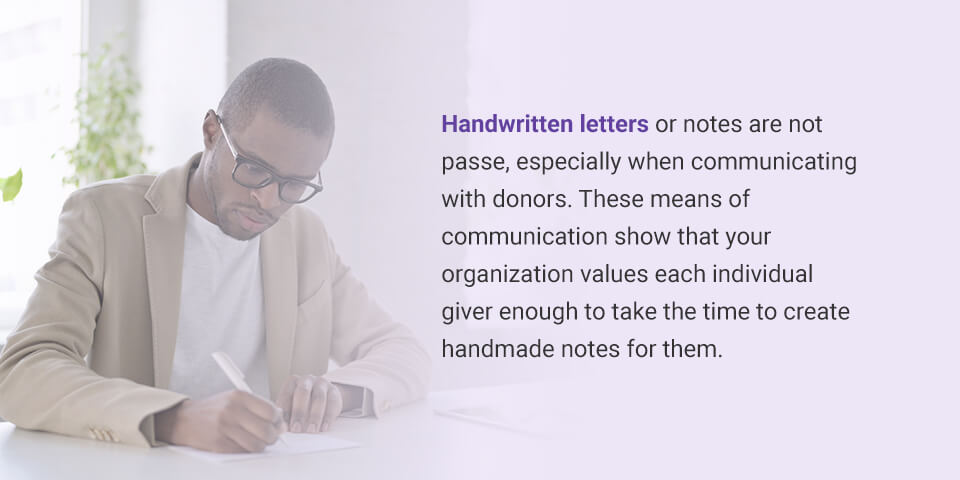
Make your communications with donors personal to entice givers to stay with your group. Handwritten letters or notes are not passe, especially when communicating with donors. These means of communication show that your organization values each individual giver enough to take the time to create handmade notes for them.
If your organization does not have the resources to write letters for every donor, you can still create more personalized touches. Segment donors into similar groups and create customized email messages for each one.
Generally, form letters won’t feel personal enough for reaching out to donors and getting them to stick with your group. Create at least some forms of tailored communications to show how much you value them.
6. Surprise and entertain them
Be unique in how you interact with your donors. While your donor retention campaign should inspire givers, it should also entertain and surprise them.
There are several ways to creatively interact with your donors:
- Social media: Use social media’s features to your advantage. For instance, consider creating collages on Instagram or interacting on Twitter. If you post videos to YouTube or have live chats, make sure to announce them on Twitter to engage more people.
- Email campaigns: Social media methods may work better for younger demographics who more frequently use platforms such as YouTube, Instagram, and Twitter. However, all ages can appreciate creative, humorous email campaigns. You may even want to create a scavenger hunt in your emails to encourage click-throughs by hiding links to information about special events, videos of your organization’s works, or social media outlets.
- Special content: You should also provide donors with special content in your communications. Donors greatly value exclusive information that gives them an insider look that others don’t have. Stories from your organization’s beneficiaries and your group’s impact are some of the most in-demand topics for this form of content. Among people who give via subscription, 52% preferred stories that show impact. Additionally, 34% of givers who did not use a subscription model would more likely switch to a subscription after seeing stories from beneficiaries.
By delivering unexpected messaging to your donors, you’ll keep them interested and engaged with your content. They’ll look forward to the next message and may be more likely to become repeat donors through these connections.
7. Create a feedback loop
If you want to build a relationship with your donors, you should have a give-and-take aspect. Don’t just throw emails, social media posts, and videos at your givers. Request their feedback on your messaging, donation campaigns, and organization. You may discover valuable insights that you’ve missed in your methods. Additionally, when you let donors have a say in your communication with them, they will feel more invested in your organization.
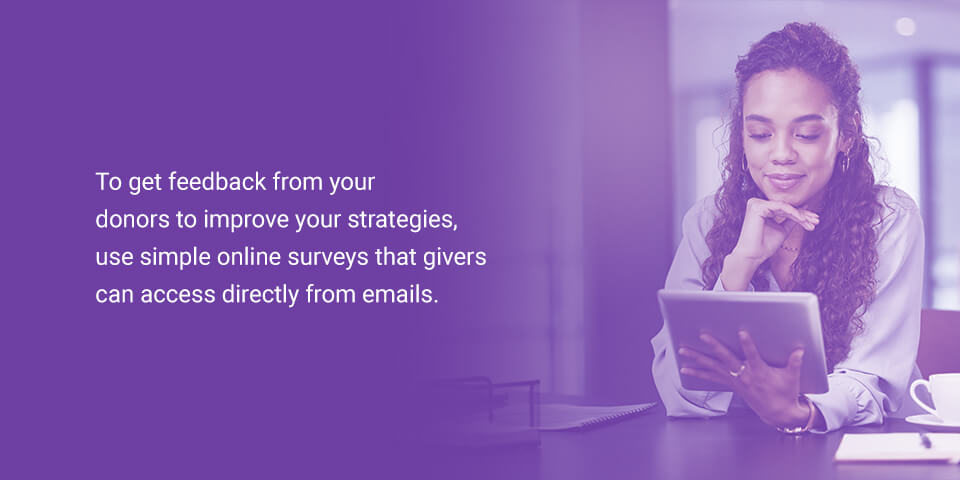
To get feedback from your donors to improve your strategies, use simple online surveys that givers can access directly from emails. Keep the surveys you send short to reduce the chances of someone abandoning them before completion.
You may request advice through surveys after campaigns, following individual donations, or after a donor attends an event. Sending messages and surveys at these times also adds to your communications with givers and keeps your organization’s work fresh in their minds.
8. Perfect your annual fund
Even if you use a variety of fundraising methods, the annual fund likely remains the core of your strategy. Instead of looking at your annual fund as a one-time event, put it into your fundraising efforts’ long-term plans. Generate a multi-year method for fundraising and place your annual fund in that plan.
Your annual fund can include pledges that people fulfill throughout the year via subscription giving. This method reduces the financial strain for donors while allowing them to reach a higher pledge than they could with a one-time gift.
9. Try P2P campaigns
An added benefit of having recurring donors and loyal supporters of your organization is their ability to help you in fundraising. Peer-to-peer (P2P) fundraising online allows people to raise money for your group. Support their efforts by facilitating ways to give to your organization.
To make these P2P campaigns effective, you should make giving simple. Offer multiple methods for donating to your group. The more ways you have for people the give, the fewer hurdles potential donors will face. With the increase in virtual fundraising, people have come to expect convenience. When you enable people from anywhere to give to your group, you can raise more funds and build more interest in your work. Online giving through P2P campaigns is exceptionally important because those hosting the fundraisers have networks they tap into, which may include people from around the world.
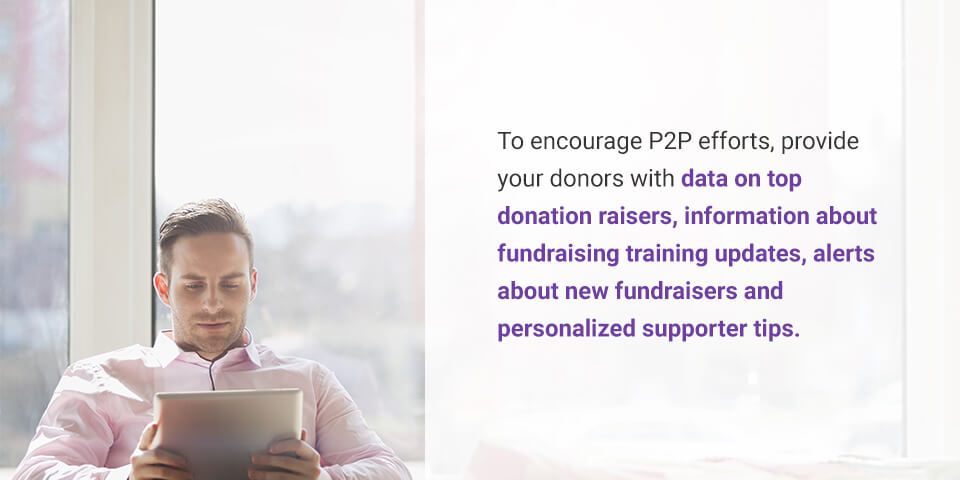
You should also continue to build and excite your existing community of donors. The more excited your donors are, the greater the chances they will support P2P campaigns or host their own. To encourage P2P efforts, provide your donors with data on top donation raisers, information about fundraising training updates, alerts about new fundraisers, and personalized supporter tips. Include links to social media and your website to make participating as a P2P fundraising host or giver simple.
10. Invest in donor management software
With multiple donors from around the country or globe, it’s not always realistic, feasible, or economically sound to keep paper records. Using old methods of tracking donors wastes time and resources and makes it too easy for information to get lost or entered incorrectly. Good donor management software is an investment in your organization that will offer returns for years to come.
Elements of quality donor management software to look for include:
- Simple-to-generate reports for board members and staff.
- Donor retention rate calculations.
- The ability to create customized tags and fields.
- Simple pledge and donation tracking.
- Sharing reports with a single click.
- Security to protect donor information.
- No need for special programming skills to use.
Your software will help you get the hard data your board members request about donor numbers, retention rates, and donations. Plus, it will make tracking donations simple. Keeping your donors organized within a software program will make executing any of the above donor retention strategies easier, as they all depend on knowing your givers and quickly accessing accurate, up-to-date information about donors, campaigns, and volunteers.

Achieve a Healthy Donor Retention Rate with GiveSmart
This donor retention guide should spur you to make the changes needed to see new growth and implement strategies that improve your retention rates. One way to do that is through using organizational software that helps you manage your donors. At GiveSmart, we provide you with customized solutions for fundraising. Request a demo to see how we can provide your nonprofit with the solutions you need.
Related


